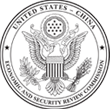October 2020 Trade Bulletin900.08 KB
Highlights of This Month’s Edition
- Bilateral trade: The U.S. goods trade deficit with China totaled $29.8 billion in August 2020; year-to-date, the goods deficit was $193.1 billion, down 16.5 percent year-on-year.
- U.S.-China trade tensions: The U.S. Department of Commerce (DOC) imposed export restrictions on SMIC, China’s largest semiconductor manufacturer, dealing a further setback to China’s costly but unfulfilled efforts to establish self-sufficiency in the industry; DOC clarified prohibited transactions for TikTok and WeChat, but questions remain on process, appropriate legal tools, and the future of TikTok’s ownership; China’s Ministry of Commerce released a guiding framework for its unreliable entity list without publishing the list itself.
- Financial markets: Leading index provider FTSE Russell announces it will include Chinese government bonds in its landmark global fixed-income investment index, elevating the international profile of China’s financial markets and significantly expanding Beijing’s access to foreign capital.
- Policy trends in China's economy: A new government plan to strengthen investment in strategic emerging industries and establish industrial clusters shows industrial policy remains a cornerstone of China’s economic management; CPP releases the Opinions on Strengthening the United Front Work of the Private Economy in a New Era, raising further concerns about Chinese government’s control of the domestic private sector.
- In focus – China’s 2060 carbon neutrality pledge: At the UN General Assembly, the Chinese government pledged to achieve carbon neutrality by 2060, but ongoing investments in coal both domestically and abroad undercut these promises.
